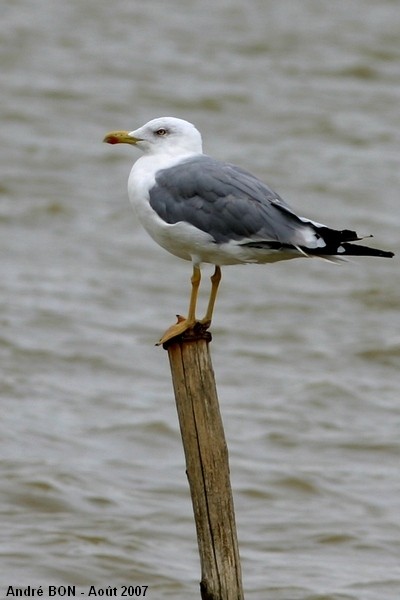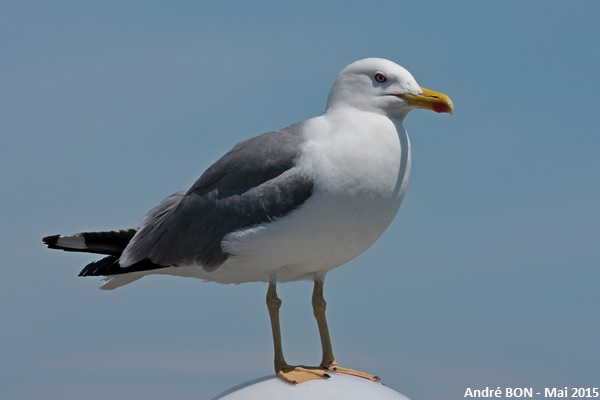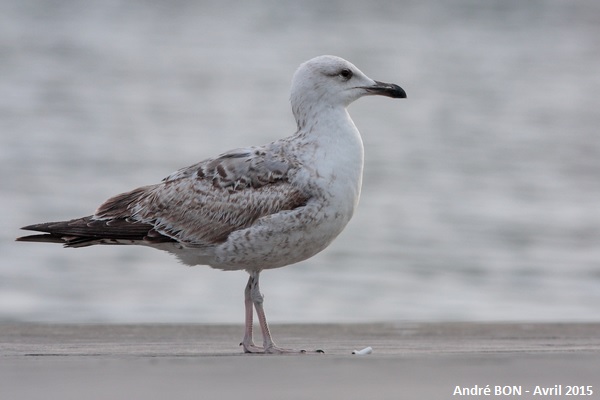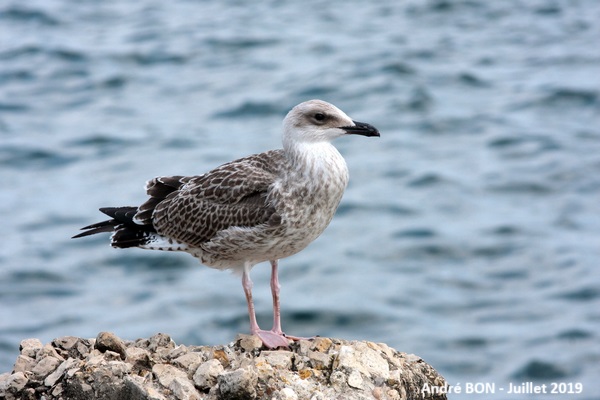



| Yellow-legged Gull (Larus michahellis (Naumann, 1840)) |




|
|
Scientific name: Larus michahellis (Naumann, 1840) Common name: Yellow-legged Gull French name: Goéland leucophée Order: Charadriiformes Family: Laridae Size: Body size : 58 to 68 cm; Wingspan : 130 to 158 cm; Weight : 750 to 1250 g Habitat: Rocky coasts, rocky islands, but also in inland regions and you can find it in urban areas. Food: Fishes, other species' eggs and chicks and rubbish in rubbish dumps. Nesting: The Yellow-legged Gull nests in colonies. The nest is a rudimentary mound of vegetation built on the ground. Females lay 2 or 3 eggs late March early April. Gull parents regurgitate food to the chicks. Migration: Many Yellow-legged Gulls are sedentary, some of them migrate to the Atlantic coasts from Senegal to the North Sea. Geographic area: Mediterranean coasts, west coasts of the Black Sea, the Madeira Island, the Canary Islands and the Azores. |
The Yellow-legged Gull's body is thicker than other Gull species. The legs are yellow. The head is rather square-shaped. The beak is shorter and thicker than on other Gull species. It is yellow with a small red mark on the underside. This red mark sometimes extends to the upper mandible. There is a red ring around the eye. The belly, the chest and the head are white. The back and the wings are a relatively dark grey colour. The tip of the wings is black with some white spots. Juveniles are a dark brown colour. The Common Gull is smaller. There is no mark on the bill and the legs are greenish-yellow. |
| [To know more about the Yellow-legged Gull] [Next picture] [Top] |

|
There is no doubt on the identification based on the thick body shape and on the yellow colour of the legs. |
| [To know more about the Yellow-legged Gull] [Next picture] [Previous picture] [Top] |

|
I observed this Yellow-legged Gull during a walk near the Montjuic Castle. Used to the presence of many tourists, it was very easy to approach. |
| [To know more about the Yellow-legged Gull] [Next picture] [Previous picture] [Top] |

|
This Gull has been observed near the port, close to the aquarium. I am not an expert on juvenile gulls. I think this is a specimen that has just passed its first winter. The dark iris normally turns to a light colour by the age of one. There is a possible confusion with a juvenile Caspian Gull (Larus cachinnans). I think the speckled flanks rather indicate the Yellow-legged Gull species. |
| [To know more about the Yellow-legged Gull] [Previous picture] [Top] |

|
I have not made much progress in identifying young Gulls and the Black Sea shores make the presence of Caspian Gulls (Larus cachinnans) even more likely. I listed this one as a Yellow-legged Gull because of the bill with a well-marked gonydeal angle, the eyespot and the distinctly spotted flanks. |